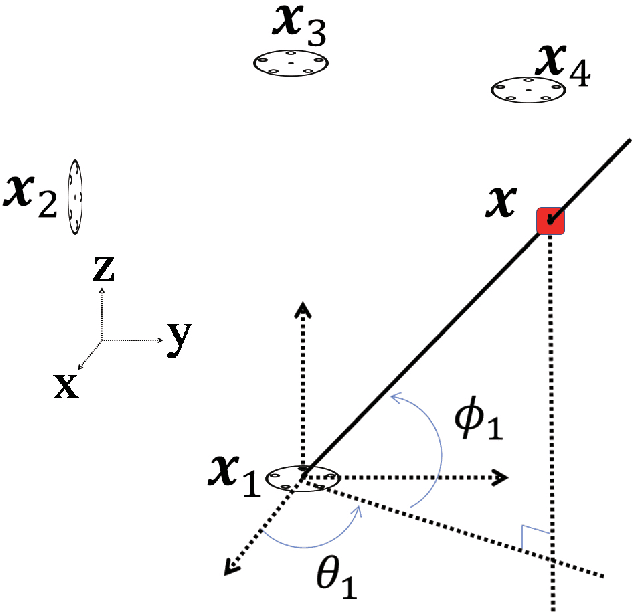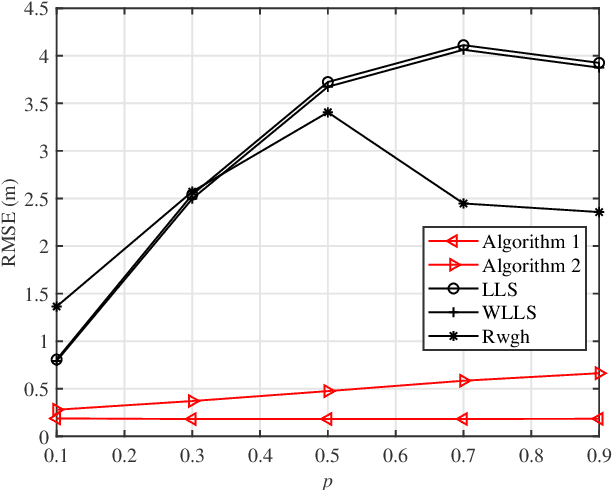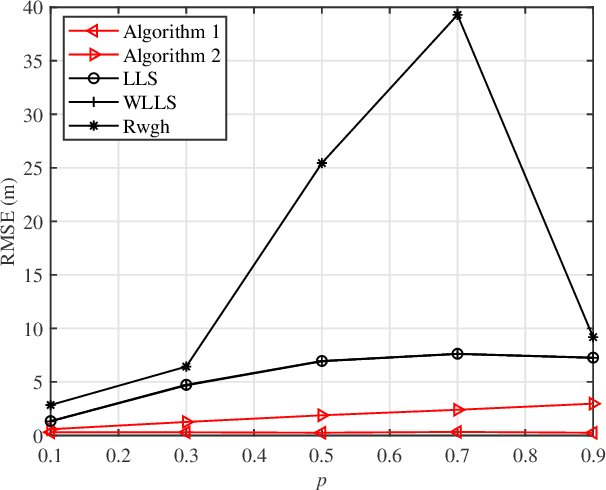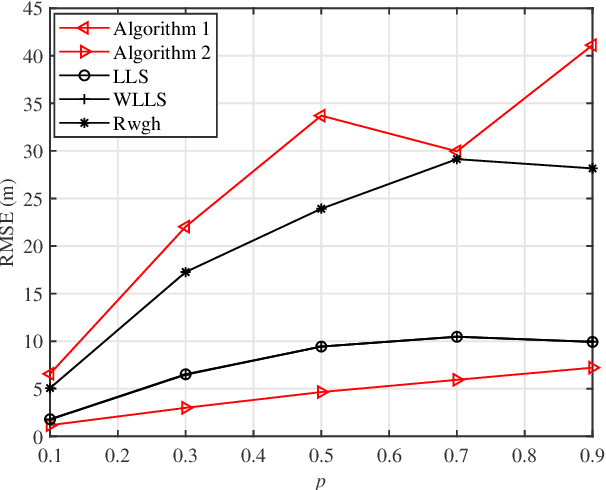Christian Schindelhauer
Critical Near-Field Impedance Matrices
Jul 05, 2024Abstract:We investigate the theoretical impedance equations for several near-field antenna positions. In the standard model one computes the currents at the antennas for given voltages using the impedance matrix of the antennas, which is only possible if the determinant of the impedance matrix is non-zero. We consider Hertzian group antennas, its relative corresponding impedance and two approximations (mid and far) of it. For the approximations we show that for many situations the determinant is zero. We find three antenna configurations for three antennas, i.e., on a line, on a right triangle, and an isosceles triangle, which result in a zero determinant of the impedance for the far-field approximation. This means that with existing methods, one cannot determine the behavior of this antenna system. For the better mid approximation, we find a configuration of 15 triangular-positioned antennas resulting in a singular impedance matrix. Furthermore, we investigate $n\times n$ grid placed antennas in the more accurate Hertzian impedance model and find that for $d \approx 4.1$ wavelengths of grid distance for n=2, ..., 8 the absolute value of the determinant of the corresponding impedance matrix decreases by an order of magnitude with each increased grid size.
Robust Time-of-Arrival Localization via ADMM
Jun 15, 2023



Abstract:This article considers the problem of source localization (SL) using possibly unreliable time-of-arrival (TOA) based range measurements. Adopting the strategy of statistical robustification, we formulate the TOA SL as minimization of a versatile loss that possesses resistance against the occurrence of outliers. We then present an alternating direction method of multipliers (ADMM) to tackle the nonconvex optimization problem in a computationally attractive iterative manner. Moreover, we prove that the solution obtained by the proposed ADMM will correspond to a Karush-Kuhn-Tucker point of the formulation when the algorithm converges, and discuss reasonable assumptions about the robust loss function under which the approach can be theoretically guaranteed to be convergent. Numerical investigations demonstrate the superiority of our method over many existing TOA SL schemes in terms of positioning accuracy and computational simplicity. In comparison with its competitors, the proposed ADMM is in particular observed to produce location estimates with mean squared error performance closer to the Cram\'{e}r-Rao lower bound in our simulations of impulsive noise environments.
Simulation of a first prototypical 3D solution for Indoor Localization based on Directed and Reflected Signals
May 30, 2023Abstract:We introduce a solution for a specific case of Indoor Localization which involves a directed signal, a reflected signal from the wall and the time difference between them. This solution includes robust localization with a given wall, finding the right wall from a group of walls, obtaining the reflecting wall from measurements, using averaging techniques for improving measurements with errors and successfully grouping measurements regarding reflecting walls. It also includes performing self-calibration by computation of wall distance and direction introducing algorithms such as All pairs, Disjoint pairs and Overlapping pairs and clustering walls based on Inversion and Gnomonic Projection. Several of these algorithms are then compared in order to ameliorate the effects of measurement errors.
Globally Optimized TDOA High Frequency Source Localization Based on Quasi-Parabolic Ionosphere Modeling and Collaborative Gradient Projection
Feb 10, 2023



Abstract:We investigate the problem of high frequency (HF) source localization using the time-difference-of-arrival (TDOA) observations of ionosphere-refracted radio rays based on quasi-parabolic (QP) modeling. An unresolved but pertinent issue in such a field is that the existing gradient-type scheme can easily get trapped in local optima for practical use. This will lead to the difficulty in initializing the algorithm and finally degraded positioning performance if the starting point is inappropriately selected. In this paper, we develop a collaborative gradient projection (GP) algorithm in order to globally solve the highly nonconvex QP-based TDOA HF localization problem. The metaheuristic of particle swarm optimization (PSO) is exploited for information sharing among multiple GP models, each of which is guaranteed to work out a critical point solution to the simplified maximum likelihood formulation. Random mutations are incorporated to avoid the early convergence of PSO. Rather than treating the geolocation of HF transmitter as a pure optimization problem, we further provide workarounds for addressing the possible impairments and challenges when the proposed technique is applied in practice. Numerical results demonstrate the effectiveness of our PSO-assisted re-initialization strategy in achieving the global optimality, and the superiority of our method over its competitor in terms of positioning accuracy.
* This is the accepted version. The final version of this paper has been published in the IEEE Transactions on Aerospace and Electronic Systems. The copyright is with IEEE. This version prevails, as there are unfortunately uncorrected editing mistakes in the final one
Two Efficient and Easy-to-Use NLOS Mitigation Solutions to Indoor 3-D AOA-Based Localization
Aug 13, 2021



Abstract:This paper proposes two efficient and easy-to-use error mitigation solutions to the problem of three-dimensional (3-D) angle-of-arrival (AOA) source localization in the mixed line-of-sight (LOS) and non-line-of-sight (NLOS) indoor environments. A weighted linear least squares estimator is derived first for the LOS AOA components in terms of the direction vectors of arrival, albeit in a sub-optimal manner. Next, data selection exploiting the sum of squared residuals is carried out to discard the error-prone NLOS connections. In so doing, the first approach is constituted and more accurate closed-form location estimates can be obtained. The second method applies a simulated annealing stochastic framework to realize the robust $\ell_1$-minimization criterion, which therefore falls into the methodology of statistical robustification. Computer simulations and ultrasonic onsite experiments are conducted to evaluate the performance of the two proposed methods, demonstrating their outstanding positioning results in the respective scenarios.
 Add to Chrome
Add to Chrome Add to Firefox
Add to Firefox Add to Edge
Add to Edge